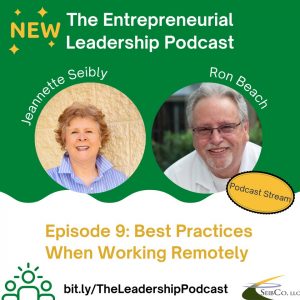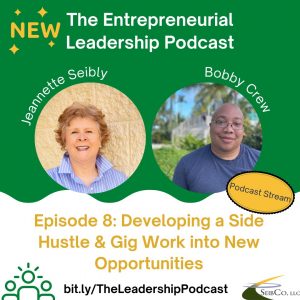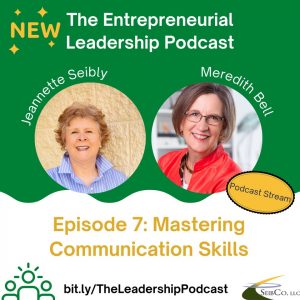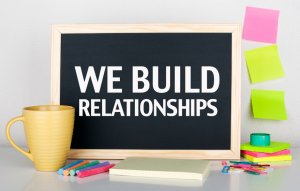
Harvard research found that 70% of meetings keep employees from doing productive work. The same study found that employee productivity was 71% higher when meetings were reduced by 40% … also, employee satisfaction improved by 52%.
But before you throw out the importance of meetings, be clear about their purpose: communicating, getting everyone on the same page and in the same book, and solving problems (current, past, and future). The biggest challenge? Too many meetings are poorly planned and facilitated!
We’ve all attended bad meetings (in fact, most of them). But, unfortunately, the negativity sticks with you! It creates a meeting recovery syndrome that hurts your productivity and drains you. But before you blame the facilitator, look at the three fingers pointing back at you! Everyone has a role in conducting effective meetings, one-on-one or group, and onsite or virtually.
These 8 Factors Improve Meetings and Increase Productivity
The biggest question to ask yourself before scheduling a meeting is: “Can I send an email instead of hosting a meeting?” In many cases, the answer will be “Yes!” Do that instead!
MEETING PREPARATION
Before the Meeting. Send out an agenda of specific items for discussion and include all documentation for review. Plan on keeping the meeting short and on point. Remember, some issues are better handled 1:1 or in small groups.
Start and End on Time. This requires everyone to be ready to begin 5 minutes before the actual start time. Turn off all distractions: electronic gadgets, phones, and mind wandering!
If you are the facilitator or presenter, arrive even earlier to ensure:
- The room is set up physically, or the virtual meeting (or hybrid) is ready to go
- Ensure PowerPoint presentation works
- Printed materials are distributed (it’s best if they are emailed the day before)
Come Prepared. Everyone is responsible for coming prepared — that means reading all documents, agendas, and other materials before the meeting and having them readily available to refer to during the meeting. (NOTE: Remember, simple graphs with short narratives are the easiest to understand). Write down questions. Or, better yet, get the questions answered before the meeting!
MEETING PROTOCOL
Take Turns. Make sure you hear from everyone! Unless each person contributes, ideas get missed, important nuances get overlooked, and conflict can erupt! Team members will not voice their concerns if they fear ridicule! Remember, conflicts should not be ignored… there is usually a valid point no one wants to hear. But it’s pay now or pay later!
LISTEN! This is the most critical factor in improving your meetings now. Listening requires active involvement. It includes hearing things you don’t know, don’t agree with, or don’t believe in. Active listening has three components: 1) hearing what is said verbally, 2) hearing what is not said, and 3) being aware of non-verbal cues (e.g., attitude, tone, physical). Good listening skills can resolve old issues and formulate new ideas for products and services. It’s a skill everyone needs to develop.
State Your Point Upfront. Most attendees will stop listening when others talk too long, share gossip, or use technical jargon. Avoid monologues or lengthy responses by starting with the point first, then providing any supporting information to reinforce the point presented.
Ask Questions. Too often, we don’t ask questions to learn more. Instead, we believe we “get it” and then misuse the information. Or, we judge the idea or information as irrelevant without further investigation. Or, we don’t want to ask questions because we feel stupid. (Get over it!) Instead, learn how to drill down and clarify by asking questions out of a commitment to resolve the issue or move the project forward. Stay away from sounding like an interrogator – it puts everyone on the defense.
Reach Alignment. Consensus is non-productive since too much time is spent wooing a person(s) to agree with the majority, creating groupthink. When you reach alignment, you and the team have taken the best information available and made a decision.
Then consider the following:
- Can everyone live with this decision?
- Is it workable and doable?
- If not, what needs to be added or changed so everyone is on the same page moving forward?
- Then, stand firm and respond factually to the naysayers.
©Jeannette Seibly, 2016-2023 All Rights Reserved
 Jeannette Seibly is The Leadership Results Coach. With over 30 years as an award-winning international executive coach, speaker, and business author, Jeannette’s clients effectively work through sticky situations and challenging relationships to become positive influencers. Contact Jeannette for a confidential discussion. PS: She’s also a three-time Amazon Best-Selling Author!
Jeannette Seibly is The Leadership Results Coach. With over 30 years as an award-winning international executive coach, speaker, and business author, Jeannette’s clients effectively work through sticky situations and challenging relationships to become positive influencers. Contact Jeannette for a confidential discussion. PS: She’s also a three-time Amazon Best-Selling Author!
A note from Jeannette about meetings and productivity: Did you know most meetings sabotage productivity and employee satisfaction? The reasons: poor facilitation and quality, and they are time-consuming. It actually creates a “meeting recovery syndrome” where people feel drained and non-productive. It’s time to develop the skills required to hold productive meetings and hold less of them! Contact me for a confidential conversation about a training program!
Consider: It can be challenging to facilitate meetings as a manager or director (or anyone else, too!). I have extensive experience guiding meeting facilitators to improve their meeting management skills, virtually and onsite. Learning this skill takes time and practice. Contact me if you want an in-depth, one-on-one hour over 13 weeks. Remember, coaching speeds up your ability to trust yourself and get results.
 How’s your leadership development progressing? Are you moving forward … or a tad stuck? Do you need a “nudge” or “kick-in-the-butt?” Want to accelerate and soar your results? Then, get into action by contacting me for a confidential conversation.
How’s your leadership development progressing? Are you moving forward … or a tad stuck? Do you need a “nudge” or “kick-in-the-butt?” Want to accelerate and soar your results? Then, get into action by contacting me for a confidential conversation.


 How’s your leadership development progressing? Are you moving forward … or a tad stuck? Do you need a “nudge” or “kick-in-the-butt?” Want to accelerate and soar your results?
How’s your leadership development progressing? Are you moving forward … or a tad stuck? Do you need a “nudge” or “kick-in-the-butt?” Want to accelerate and soar your results? 
 Your managers need your help! They are being held accountable for results and people, and many don’t have the skills to do it well! Therefore, they fail to achieve the intended results! It’s time to provide an
Your managers need your help! They are being held accountable for results and people, and many don’t have the skills to do it well! Therefore, they fail to achieve the intended results! It’s time to provide an 
 Jeannette Seibly is The Leadership Results Coach. She has over 30 years of award-winning international experience as an executive consultant, speaker, and business author. Her clients surpass the norm by working through sticky situations and challenging relationships to become positive influencers.
Jeannette Seibly is The Leadership Results Coach. She has over 30 years of award-winning international experience as an executive consultant, speaker, and business author. Her clients surpass the norm by working through sticky situations and challenging relationships to become positive influencers.  Announcing New Workshop! Traditional leadership (e.g., formal, metrics-driven) is being replaced with human leadership (e.g., focus on the human dynamics that impact results). For example, “That’s how it’s always been done.” vs. “Great idea. How do you recommend we implement it?” However, your managers and directors are being overlooked regarding the training required to be an effective boss and leader. Read about my newest workshop:
Announcing New Workshop! Traditional leadership (e.g., formal, metrics-driven) is being replaced with human leadership (e.g., focus on the human dynamics that impact results). For example, “That’s how it’s always been done.” vs. “Great idea. How do you recommend we implement it?” However, your managers and directors are being overlooked regarding the training required to be an effective boss and leader. Read about my newest workshop: 
 This week’s PODCAST: Listen to “Best Practices When Working Remotely” with my guest, Ronald Beach, Ph.D., on
This week’s PODCAST: Listen to “Best Practices When Working Remotely” with my guest, Ronald Beach, Ph.D., on 
 This week’s PODCAST: Listen to Grow your side hustle into a full-time job with my guest, Bobby Crew on
This week’s PODCAST: Listen to Grow your side hustle into a full-time job with my guest, Bobby Crew on 
 This week’s PODCAST: Listen to the Mastering Communication Skills with my guest, Meredith Bell, on
This week’s PODCAST: Listen to the Mastering Communication Skills with my guest, Meredith Bell, on 
 This week’s PODCAST: Listen to How the pandemic led a professional copywriter, speaker and author to become an accidental artist with my guest, Debra Jason, on
This week’s PODCAST: Listen to How the pandemic led a professional copywriter, speaker and author to become an accidental artist with my guest, Debra Jason, on 
